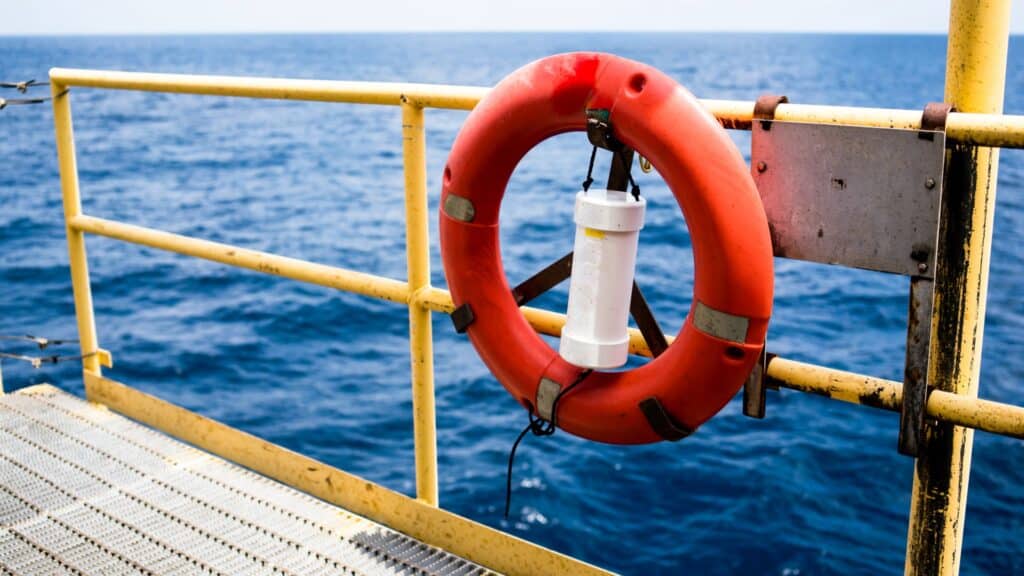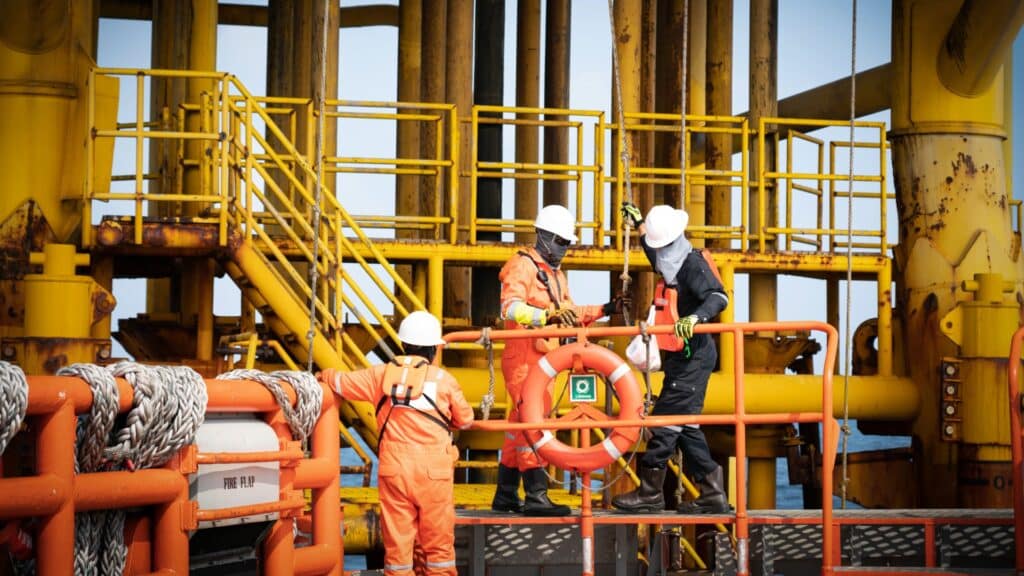Offshore platforms, whether in oil & gas or renewables, often began life with access hardware that was never purpose-built for harsh marine conditions. Exposed to saltwater, high winds, and constant weathering, gates and hatches can quickly deteriorate, leading to safety concerns, reduced reliability, and the risk of falling short of today’s offshore standards.
Retrofitting with hardware engineered specifically for offshore environments provides a practical solution. By replacing outdated or unsuitable components with durable, purpose-made designs, operators can keep platforms safe, compliant, and efficient — while extending the lifespan of vital assets.
The Risks of Outdated Offshore Access Hardware
Even small signs of wear on gates and hatches can create serious challenges offshore. Corrosion, stiff or faulty hinges, and compromised latches not only pose a safety risk for personnel, but they can also impact operational efficiency.
Outdated hardware often struggles to meet modern offshore safety and compliance standards. Left unaddressed, these issues can lead to equipment failures, unplanned maintenance, and costly downtime — all of which affect the reliability and productivity of your platform, whether it’s in oil & gas or renewable energy operations.
By identifying these risks early and implementing retrofit solutions, operators can protect their teams, maintain compliance, and extend the life of their critical access points.

When and Why to Retrofit Hardware
Retrofitting becomes essential when gates, hatches, or other access hardware show signs of wear, corrosion, or reduced functionality. Common indicators include stiff hinges, worn latches, compromised seals, or difficulty operating under offshore conditions.
Beyond visible wear, retrofitting ensures that your hardware continues to meet modern safety and regulatory standards. For both oil & gas platforms and offshore wind farms, addressing these issues proactively reduces the risk of incidents, improves operational efficiency, and extends the lifespan of critical assets.
Implementing retrofit solutions early helps operators maintain safe, reliable, and compliant platforms — keeping personnel protected and operations running smoothly, even in the harshest offshore environments.
Retrofitting for Safety and Compliance
Offshore regulations and safety standards continue to evolve, making it essential that gates, hatches, and other access points remain fully compliant. Retrofitting provides a practical way to upgrade existing hardware to meet modern requirements while maintaining structural integrity.
Health and safety organisations, such as the G+ Global Offshore Wind Health & Safety Organisation, provide comprehensive guidance for offshore access equipment. Key safety recommendations include:
- Fall protection must be provided on any ladder where a fall of over 3 meters could occur
- Self-closing gates on platforms are the preferred solution for preventing falls when this is a practical and reliable approach
- Hatches should be self-closing to enhance safety and prevent accidental openings Good
- Self-closing mechanisms should not slam shut, as this can cause injury, and must allow safe passage of the operator while in the open position
- Material selection, surface coating and corrosion allowance for all external safety-related components and structures must be suitable for offshore use
Purpose-built retrofit solutions improve safety by ensuring hinges, latches, and seals operate reliably under extreme conditions. They reduce the risk of corrosion-related failures and provide consistent, secure access for personnel. For both oil & gas platforms and offshore wind farms, retrofitting is a critical step in maintaining compliance, protecting workers, and supporting uninterrupted operations.

Extending Platform Lifespan and Cost Efficiency
Retrofitting offshore gates and hatches helps extend the operational life of your platform by replacing worn or outdated hardware with durable, purpose-built solutions. By addressing corrosion, wear, and mechanical fatigue, retrofits ensure that critical access points continue to perform reliably for years to come.
Retrofitting offshore gates and hatches reduces long-term operational costs by replacing worn or outdated hardware before it fails, avoiding expensive reactive repairs. Reliable, purpose-built retrofit solutions also minimise disruption to platform operations, ensuring access points remain fully functional and keeping your operations running smoothly.
How Gatemaster Retrofit Solutions Work
Our retrofit solutions are purpose-built to fit seamlessly into existing offshore platforms, whether in oil & gas or renewable energy. We follow a simple, structured process to ensure reliability, durability, and minimal disruption to operations:
- Assessment and Consultation – We evaluate your current gates and hatches to determine the best retrofit solution for your platform.
- Design and Engineering – Our engineers create components that integrate perfectly with your existing structures, tailored to your platform’s requirements.
- Manufacturing – All retrofit hardware is manufactured in our UK facility, built to withstand harsh offshore conditions and engineered for long-term performance.
- Installation Support – We provide clear guidance, documentation, and aftercare to ensure smooth installation and continued reliability.
Whether standard or bespoke, Gatemaster retrofit solutions enhance the longevity, performance, and efficiency of your offshore platforms, delivering peace of mind for operators worldwide.